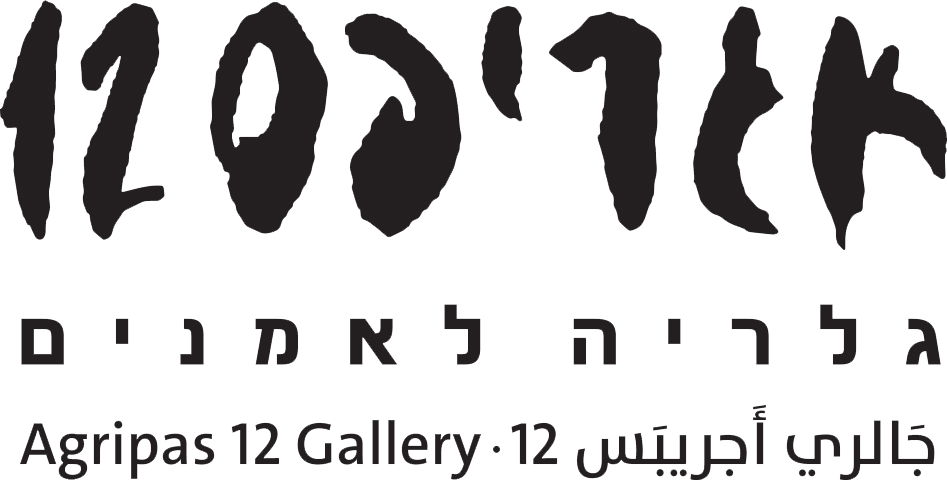
פרוין שמואלי בוכניק, מאלפת המפלצות
אוצרת, נורית טל-טנא
פתיחה: 27.4.2023 | נעילה: 27.5.2023
אנגלית לאחר עברית
מאלפת המפלצות
האמנית פרוין שמואלי בוכניק מעלה ביצירתה הקבלה בינה לבין הגיבורים האגדתיים, בין המיתוס הארכיטיפי הקדום לעולמה הארצי והרוחני. במכוון ובמודע היא מייצרת תמונות ואובייקטים פיסוליים רבי עוצמה הנוגעים באנרגיית החיים. זהו ״מסע הגיבורה״ המבקשת להתחבר למקור המיטיב, המעניק והאוהב של חיק האם בתהליך שכולו אחדות הניגודים. המסע הוא פנים נפשי, בו האמנית משלבת איכויות חדשות שרכשה, שהן כישורי אגו שהתחשל ופוטנציאלים חיוביים של כוחות הלא מודע.
ביצירתה, הדרמה המיתית וגיבוריה משמשים לה לחקירת זהותה. הגיבורים מסמלים את הכוחות הדמונים הפנימיים, מניפת המפלצות: התשוקות, המתחים, הפחדים, הקנאה, השנאה וצללים אפלים אליהם היא מעוניינת לחבור באמונה כי התוודעות והכרה בהם יובילו ליחסי שיתוף פעולה והתמרה רוחנית ומעשית מיצר ליצירה. האמנית טוענת את התוכן הקונקרטי במשמעות חדשה, ומגייסת את המפלצות לטובת האמנות והעצמתה האישית.
פרוין מפקיעה סצנה מחיי הגיבור אל יריעת השטיח הארוג, בין סיבי הכותנה והצמר היא מטמיעה את ציור דיוקנה בצבע שמן ופורשת מול עינינו רגע מיתולוגי בו היא מתמזגת וממקמת את עצמה בדמותו. השטיח המשמש כמצע (מוצאו מאיראן כשם שמוצאה של האמנית כמהגרת שעלתה לארץ בהיותה ילדה) רווי ערבסקות אוריינטליות, עיטורים המכילים ומשתלבים עם בבאותה. טרנספורמציה עצמית המבטאת תהליך עמוק, חוויה טרנספרסונאלית המערבת ״חקירה חידתית של התהליכים החבויים״ בה היא מערבת בין המערבי – המזרחי, העכשווי והקדום. המחזה נפרש לנגד עינינו. לנו לא נותר אלא לקרוא אותו, להתעמק בדפוסיו הקבועים, לנתח את השינויים, וכך להגיע להבנת הכוחות העמוקים שעיצבו את גורלו של האדם, והמוסיפים לקבוע את מהלך חיינו הפרטיים והציבוריים.״1
כך למשל בעבודה: ״אֲיֻמָּה, כַּנִּדְגָּלוֹת״ – דיוקנה בדמות "מדוזה" המפלצתית מהמיתולוגיה היוונית, מזרת האימה שכל המביט בה הופך לאבן, מייצגת כמו כן את הפיתוי הנשי המסית והמחטיא באמצעות שערה הנחשי הטעון במיניות. ובעבודה אחרת: ״בסוד הלווייתן״ המתכתבת עם ציורו של פיטר לייסטמן, ״יונה והלווייתן״ (1621)2, בציור הנודע נראה יונה הנביא נפלט מלוע הלוויתן, לאחר שניסה להימלט מגורלו 3, ואילו בסצנה הנשית העכשווית, האמנית מבקשת להתקרב למפלצת הימית להכיר בחולשותיה האנושיות, להתגבר על המורא וכך לשלוט בגורלה. ביצירתה מתרחשת סובלימציה של הכוחות המפלצתיים והתרמתם האלכימית ליציאה לדרך של שחרור.
האובייקט הפיסולי העשוי פרגמנטים של שטיח, נפרס ופוסל כפאזל שגובש לכדי דמותה של ״ההרפיה״ – ציפור מהמיתולוגיה המתוארת כמפלצת דורסנית המסמלת את האישה המערערת ומאיימת על האידיאולוגיה הפטריארכלית. לדבריה של פרוין ״הרפיה כאישה אוטונומית המסרבת להשתיק את קולה ולא מתנצלת על המרחב שהיא תופסת בעולם. עומדת בניגוד ישיר לאידיאל הנשי – הנרטיב ההרסני האומר לנשים למחוק את עצמן כדי להפוך את עצמן למתואמות לטעם ולמבט הגברי.״
פרוין מבקשת שהמסע יהיה קולקטיבי, מטרתה שגם הצופה יעבור חוויה עוצמתית היולית שהעבודות יהדהדו ויעוררו את מעמקי נפשו לעבר מודעות חדשה.
נורית טל-טנא, אוצרת
1. ג'וזף קמפבל, פרק 1 האצלות 1. מפסיכולוגיה למטאפיזיקה, הגיבור בעל אלף הפנים, עמוד 239, הוצאת בבל, 2013
2. .Pieter Lastman, Jonah and the Whale, 1621, Museum Kunstpalast
3. ספר מלכים ב' פרק י״ד, גיבורו, הנביא יוֹנָה בֶן אֲמִתַּי, נצטווה לנבא על אנשי העיר נינווה על חורבנם אם לא יחזרו בתשובה. יונה מנסה לברוח לעיר אחרת כדי להתחמק משליחותו ובמהלך מסעו טובע בים ונבלע בלוע הלוויתן כעונש בשל בריחתו מאלוהים, ולאחר שלושה ימי תפילות בבטן הדג, סלח לו האלוהים ובלבד שיעשה את שדרש ממנו.
The monster tamer
The artist Parvin Shmueli Buchnik raises a parallel in her work between herself and legendary heroes, between ancient archetypal myths and her earthly and spiritual world. Deliberately and consciously, she creates powerful images and sculptural objects that touch upon the energy of life. This is the "Heroine’s Journey" (1) that seeks to connect with the mother’s bosom, the bountiful source of giving and loving, in a process that is all about the unity of opposites. It is an inner, spiritual journey, in which the artist combines her newly gained insights from an ego that loosens its grip, and the positive potential of forces from the unconscious.
In her work, the mythical drama and its heroes serve to examine her identity. The heroes symbolize internal demonic forces, the gamut of monsters: passions, tensions, fears, jealousy, hatred, and dark shadows that she wishes to join in the belief that acknowledging and recognizing these monsters, will lead to cooperation with them, thus spiritually and practically transforming untamed drives into works of creation. The artist charges the concrete content with new meaning, mobilizing the monsters for the benefit of art and her personal empowerment.
Parvin projects a scene from the hero's life onto the fabric of the woven carpet, while embedding an oil paint portrait of herself between the cotton and wool fibers, so that a mythological moment enfolds before our eyes, in which the artist merges with the hero, placing herself in his character. The carpet used as a canvas (originating in Iran as does the artist, who immigrated to Israel as a child) is infused with oriental arabesques, decorations that embody and blend with the artist’s heritage. It is a self-transformation that expresses a profound process, a transpersonal experience involving "an enigmatic investigation of hidden processes" in which the artist interweaves West and East, the contemporary and the ancient, as the play unfolds before our eyes. All we must do, is read it, delve into its regular patterns, analyze the changes, and thus reach an understanding of the deep forces that shape human destiny, and which further determine the course of our private and public lives.
Thus, for instance, in the work: "Ayuma kenidgalot" (from a phrase in the "Song of Songs"), a portrait of the monstrous "Medusa" from Greek mythology, instils terror by turning everyone who looks at her to stone, and moreover represents feminine temptation that incites to sin through her sexually charged snake hair. And in another work: "In the secret of the whale" which converses with Pieter Lastman’s well-known painting, "Jonah and the Whale" (1621), (2) the prophet Jonah is seen ejected from the mouth of the whale, after trying to escape his fate (3), while in the contemporary female scene, the artist seeks to get closer to the sea monster to recognize its human weaknesses, to overcome her own terror and thus to control her destiny. In her work there is a sublimation of the monstrous forces and their alchemical transformation in order to embark on the path of liberation.
The sculptural object, made from fragments of a carpet, is unraveled, and reshaped like a puzzle into the image of “The Harpy” a mythological bird described as a predatory monster that symbolizes Woman who undermines and threatens the patriarchal ideology. According to Parvin, "Harpy as an autonomous woman, refuses to silence her voice and does not apologize for the space she occupies in the world, and stands in direct opposition to the feminine ideal – the destructive narrative that tells women to erase themselves in order to make themselves compatible with the male gaze and taste."
Parvin wants the journey to be shared, her goal is that the viewers will also go through a powerful experience because the works will resonate with them and awaken the depths of their soul towards a new awareness.
Nurit Tal-Tenne, Curator
1. Joseph Campbell, The Hero with a Thousand Faces – quoted from the Hebrew edition
2. Pieter Lastman, Jonah and the Whale, 1621, Museum Kunstpalast.
3. In the book of Kings 2 14:21-25, its hero, Jonah son of Amitai, is called upon to prophesize to the people of Nineveh about their destruction if they will not repent. Jonah tries to flee to another city in order to avoid his mission and in the course of his journey he sinks into the sea and is swallowed by a whale as punishment for running away from God. After three days of prayer in the belly of the fish, God forgives him, on the condition that he does what was demanded of him.
יצירותיה של פרוין
הן סיפוריה המיוחדים של פרוין האמנית, בת דמותה של שחרזדה, ושל מדוזה המאוימת והמאיימת, שמצילה את חייה ואת העולם הנשי כשהיא פועלת בערמה, פקחות ויצירתיות, וטווה ספורים-תמונות שמאפשרים לראות מתוך מודעות תהליכים בפרספקטיבת זמן, וכך לשלוט, למתן, לנתב ולתווך את הכוחות המיתיים הארכיטיפליים בנפש ובחברה. כך היא יכולה להיות אדונית לגורלה כנגד הכוח של התרבות הדכאנית הגברית שכל אשה אמורה בימינו להאבק נגדה, תרבות שמקורה, עבור פרוין, הוא באירן מולדתה.
הדמות הנשית כאן היא מחד המפלצת המיתית של האלה הגדולה החייתית והמאיימת מאידך דמות נשית ״איומה כנדגלות״ שנאבקת בה כדי לנכס לעצמה את כוחה.
לעומת הדגם המיתי של הגיבור שנלחם במפלצת, כאן המוטיב המרכזי הוא האישה הנלחמת-שולטת מנווטת את המפלצת שהיא רבת היבטים כמו כימרה:
1. הדחפים והיצרים הפנימיים, כוחות ארכיטיפיים מיתיים של האלה הגדולה, שנובעים מהלא מודע הקולקטיבי.
2. המפלצתיות של החברה הגברית הדורסנית והדכאנית כלפי הנשים.
לעומת הנשיות הכנועה פרוין מגייסת את הכוח הלוחמני האמיץ של האמזונה. אם כי היא גם נושאת בה את האיכויות הנשיות העמלניות החרוצות שאורגות לעולם את השטיח עליו היא מציירת. היא נאבקת כגבר וגם מחבקת ומתמזגת כאשה.
העירום הנשי הינו מוטיב חתרני כשהוא מתקיים על השטיח של התרבות האירנית מדכאת הנשים ומחייבת אותן בכיסוי גוף ופנים. העירום כאן הוא התרסה פמיניסטית כנגד התרבות הדכאנית. העירום משמעו – אני הנני כפי שאני וללא בושה בגופניותי וללא העמדת פנים.
שחרזדה זו, בכל הוואריאציות של העבודות כאן, היא גם צפור ההארפי האיומה, הכוח הנשי שמנכס לעצמו את המאבק במפלצת, מאבק שהתרבות אפשרה רק לגברים. כך העבודות כולן מבטאות את האמנית פרוין ויותר מזה את האמנות בכלל. האמנות מתמודדת עם הקיום הארכיטיפלי בנפש ובעולם על ידי עיצובו מחדש, שליטה בו, הכלת המאיים, וחבור הניגודים.
השטיח הפרסי מבטא את המסורת התרבותית שמיטיבה לארוג יחד מוטיבים צורניים גאומטריים (יסוד גברי) ביחד עם מוטיבים של קוים זורמים כמו ענפים עלים ופרחים מהטבע (יסוד נשי) וכך ליצור חבור ניגודים. השטיח יוצר מסגרת יציבה מכילה מסביב לריבוי האלמנטים שיחד מאורגנים בתבנית מסודרת בעלת מרכז. במובן זה יש בו מאיכות המנדלה, כתבנית של שלמות אחוזה במרכזה שלה, כתבנית הנפש והיקום. השטיח הוא גם כארג אם גדולה בתשתית האנושות.
יש פער בין המשמעות הסמלית של השטיח כמחבר ניגודים לבין העובדה שהמסורת האירנית כיום עדיין מדכאה את הנשיות כאשר העמלנות הסבלנית של הנשים המדוכאות היא שיצרה את השטיחים, והתרבות אינה מסוגלת לממש את המשמעות הסמלית הכלל אנושית של חיבור הנשי והגברי שממתינה להתממש לא רק במזרח הרחוק אלא גם בשאר תרבויות העולם.
פרוין אחוזה במסורת התרבותית שמגולמת כאן על ידי השטיח הפרסי ונשענת עליה ומאידך נאבקת בה בגלל המרכיב הגברי הדכאני שבה. מגמתה לחבר את ניגודי הנפש הגברי והנשי וגם לחיות בשלום עם ההיבט החייתי הגופני השלם עם עצמו בעירומו, וכך בסופו של דבר תשתעשע האישה העירומה עם הלוויתן ולא תיבלע בו.
רות נצר
פסיכולוגית קלינית מומחית, אנליטיקאית יונגיאנית המשלבת בכתיבתה אמנות ופסיכולוגיה, חוקרת ספרות וקולנוע, ציירת ומשוררת ישראלית. כתבה עשרה ספרי עיון.
Parvin's art works
are the special stories of Parvin, the artist, who depicts herself as Scheherazade and Medusa, who is threatened and threatening, who saves her life and the feminine world when she uses her guile, acts wisely and creatively, and weaves a few stories that allow us to consciously see processes in a time perspective, and thus control, moderate, channel and mediate the mythical archetypal forces in the soul and society. In this way she can be the master of her destiny against the power of the oppressive male culture that every woman must fight against today, a culture that originates, for Parvin, in her homeland – Iran.
The female figure here is, on the one hand, the mythical monster of the great animal goddess and on the other hand, a threatening female figure who fights it in order to retrieve her power. In contrast to the mythical model of the hero fighting the monster, here the main motif is the woman fighting, controlling, steering the monster, which is multi-faceted like a Chimera:
The inner impulses and urges, mythical archetypal forces of the Great Goddess, which arise from the collective unconscious.
The monstrosity of the overbearing and oppressive male society towards women.
In contrast to the submissive femininity, Parvin mobilizes the brave warrior power of the Amazon. At the same time, she carries within her the hard-working female qualities that weave for the world the tapestry on which she paints. She wrestles as a man but also embraces and blends as a woman.
Female nudity is a subversive motif when it appears on the carpet of the Iranian culture that oppresses women and obliges them to cover their bodies and faces. Nudity here is a feminist defiance against the oppressive culture. Nakedness means I am as I am, without shame in my physicality and without pretending.
This Scheherazade, in all the variations of the works here, is also the terrible Harpy bird, the female force that appropriates the fight against the monster, a fight that culture has allowed only for men. This is how the works all express the artist Parvin and above all, art in general. Art confronts the archetypal existence in the soul and in the world by reshaping it, controlling, and containing it and connecting the opposites.
The Persian carpet expresses the cultural tradition that favors weaving together geometric motifs (the masculine element) together with motifs of flowing lines such as branches, leaves and flowers from nature (the feminine element) and thus create contrasts. The carpet creates a stable and inclusive frame around the multitude of elements that are organized together in an orderly pattern with a center. In this sense it has the quality of the mandala, as a pattern of perfection held in the center, as a pattern of the soul and the universe. The carpet is also like a Great Mother woven into the fabric of humanity.
There is a gap between the symbolic meaning of the carpet as bridging the contrasts and the fact that today's Iranian tradition still oppresses femininity while it is the toil of the oppressed women that created the carpets. The culture is unable to realize the all-human symbolic meaning of the female and male connection that is waiting to be realized not only in the Far East but also in other cultures of the world.
Parvin is holding onto the cultural tradition that is embodied here by the Persian carpet and leans on it. On the other hand, she is struggling with it because of the oppressive masculine element in it. Parvin’s tendency is to connect the contrasts between the male and female soul as well as to live in peace with the complete physical, naked animal aspect, so that in the end, the naked woman will play with the whale and not be swallowed by it.
Ruth Netzer is a clinical psychologist, a Jungian analyst who combines art and psychology in her writing, a researcher of literature and cinema, an Israeli painter, and a poet.
Ruth Netzer
is a clinical psychologist, a Jungian analyst who combines art and psychology in her writing, a researcher of literature and cinema, an Israeli painter, and a poet.
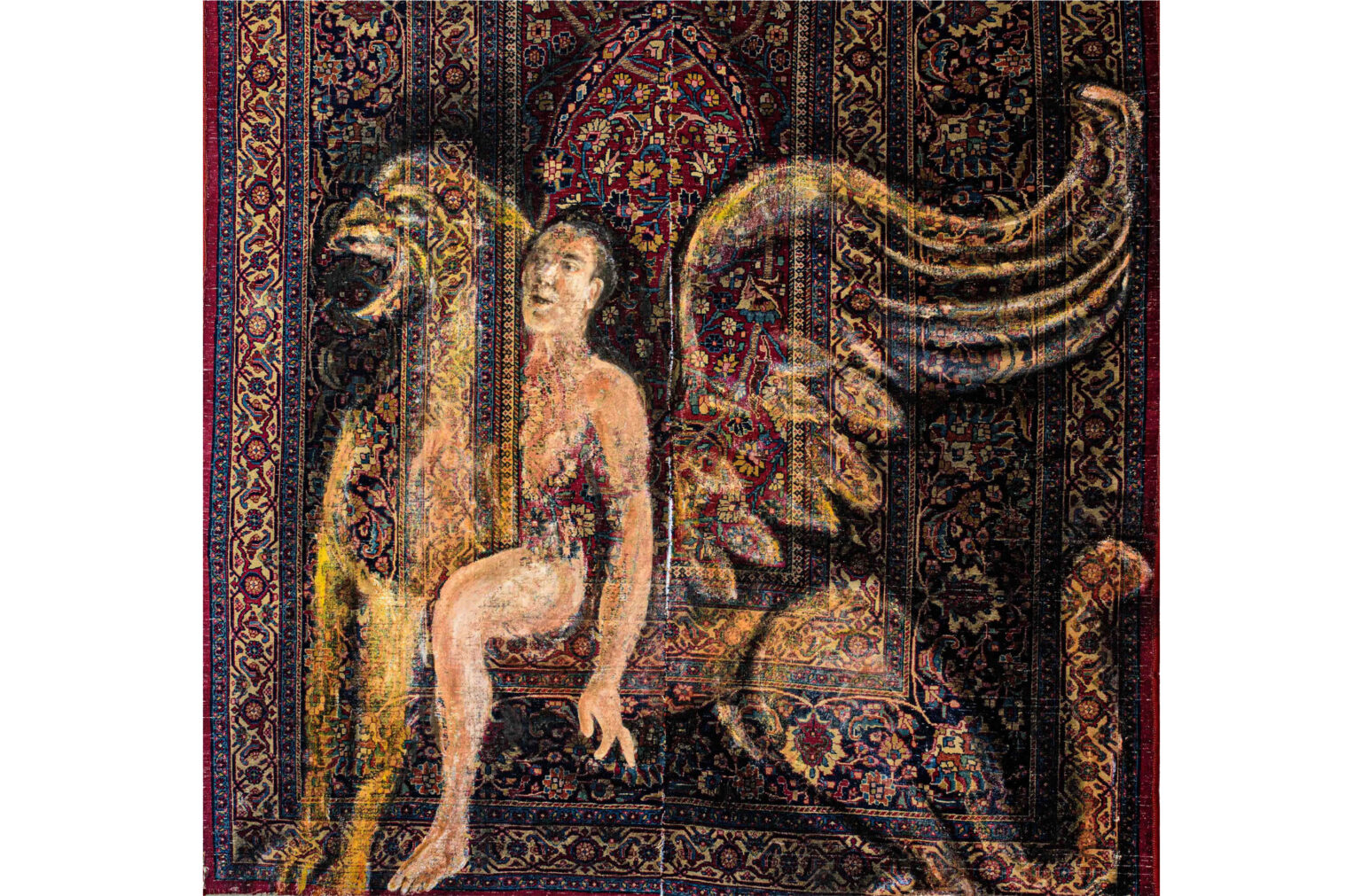

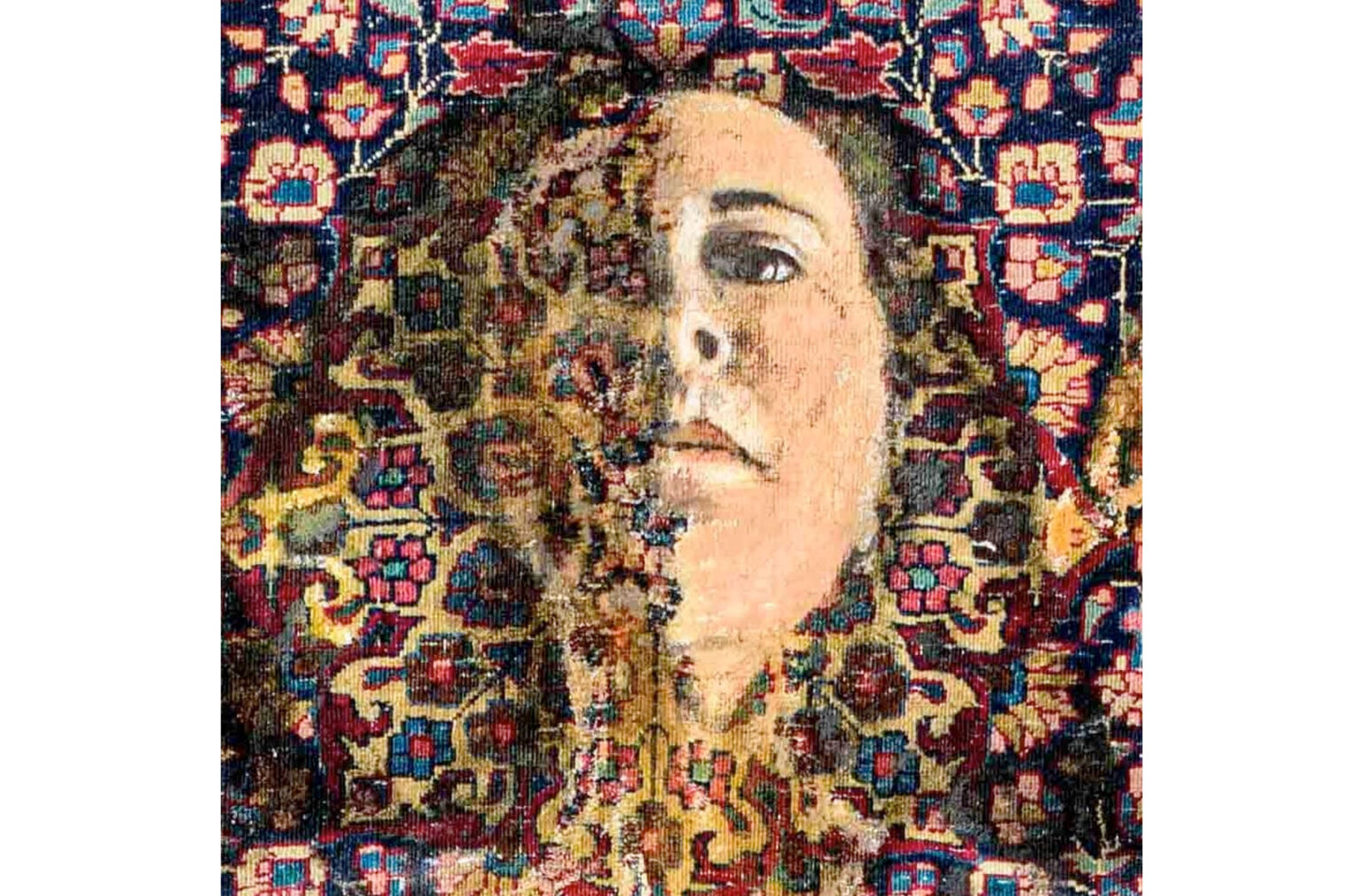
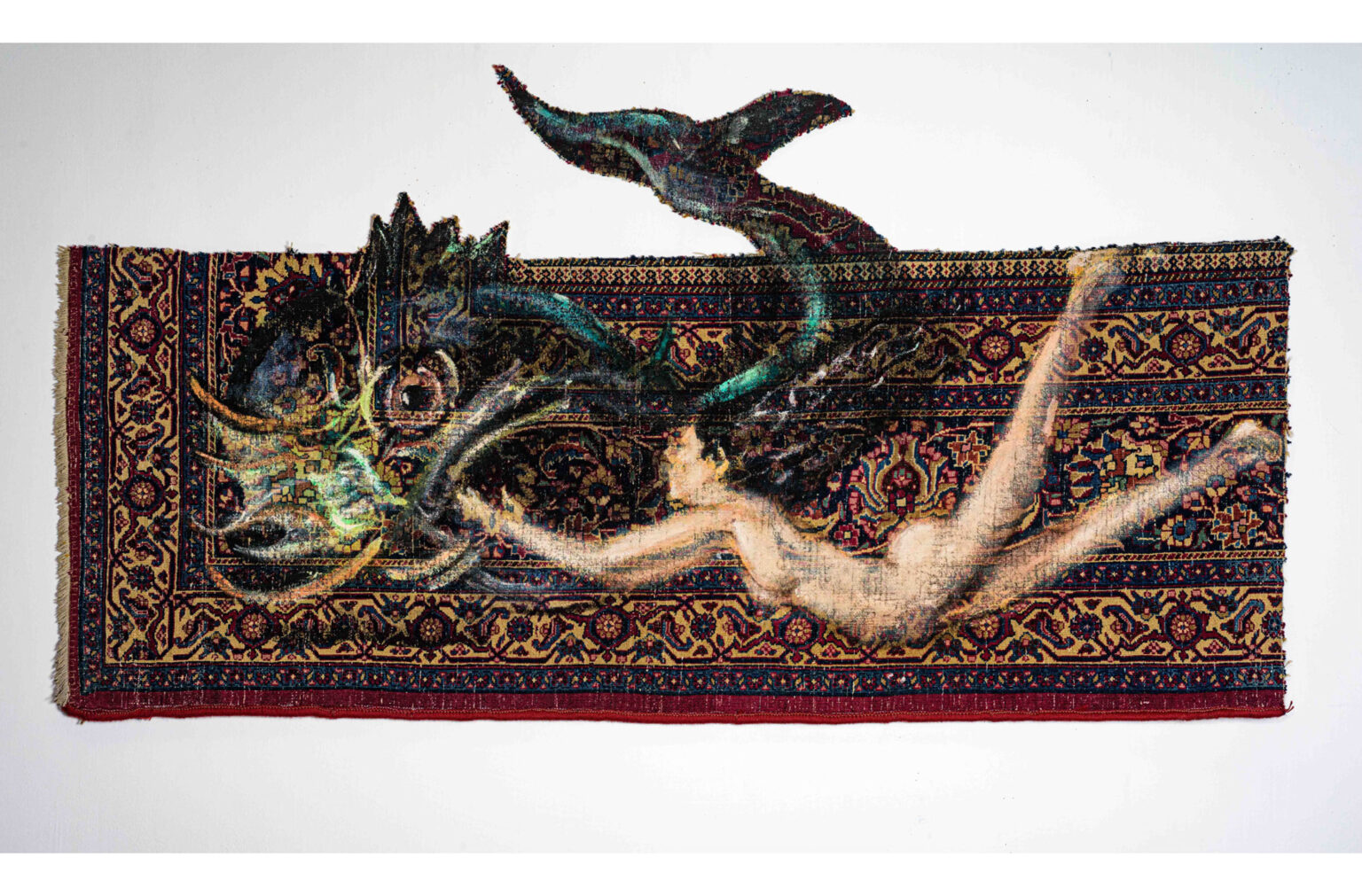
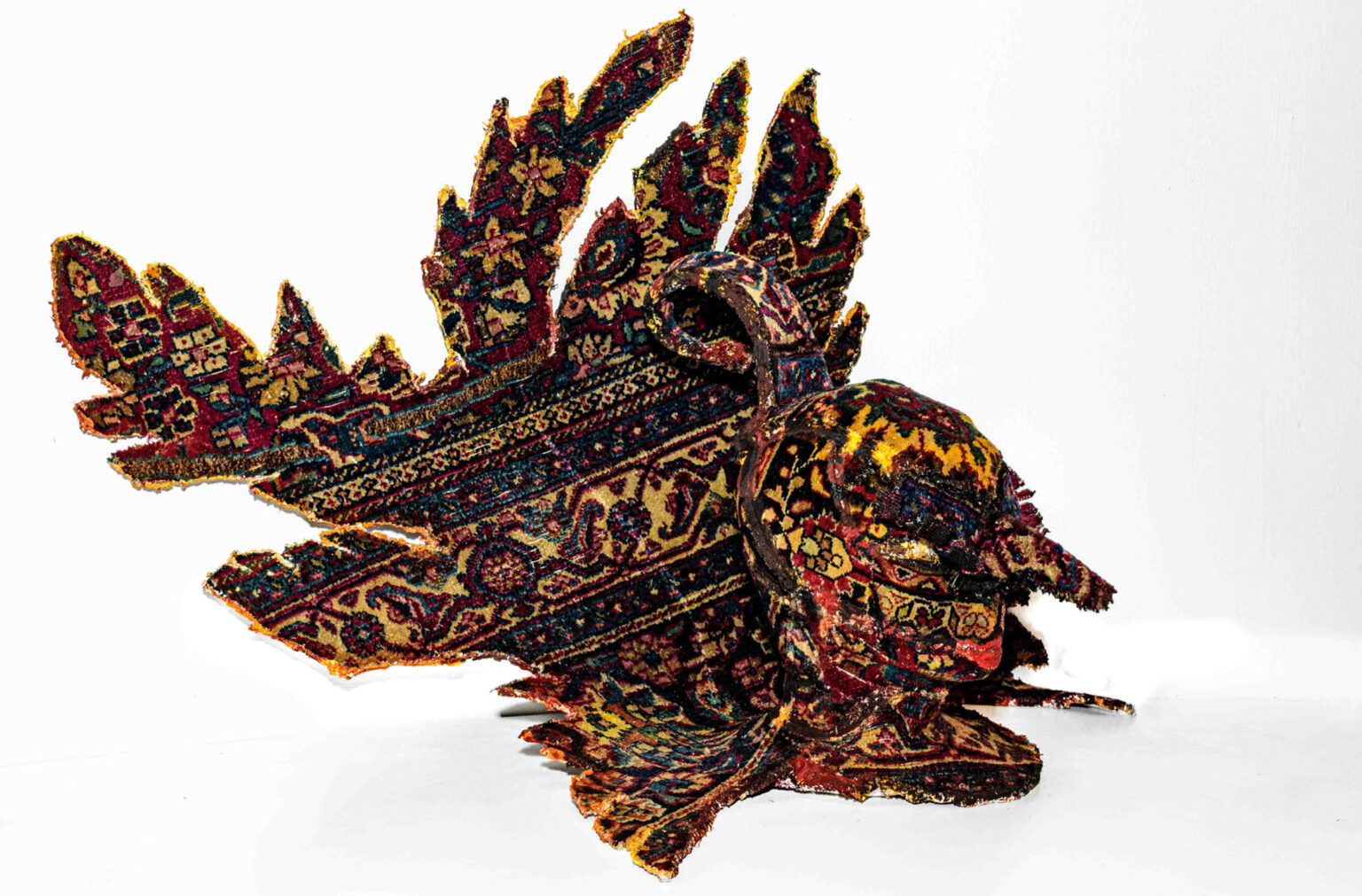
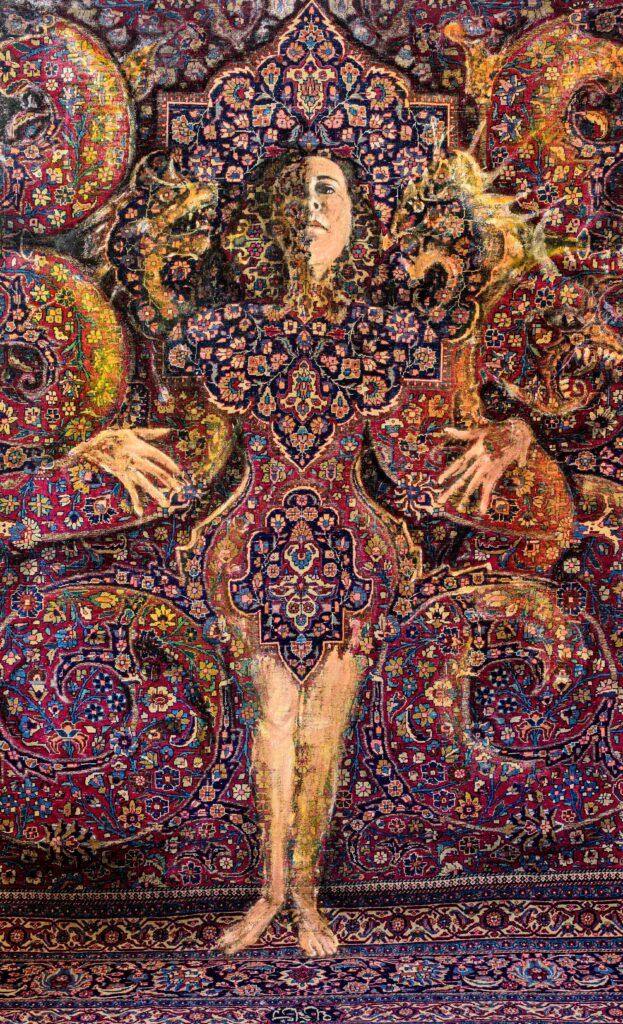
פרוין שמואלי בוכניק, מאלפת המפלצות, 2023, צבע שמן על מצע שטיח. צילום: דורון אדר

מתוך הקמת התערוכה ׳מאלפת המפלצות׳. צילום: פרוין שמואלי בוכניק

מתוך פתיחת התערוכה ׳מאלפת המפלצות׳. צילום: מירי פארוז
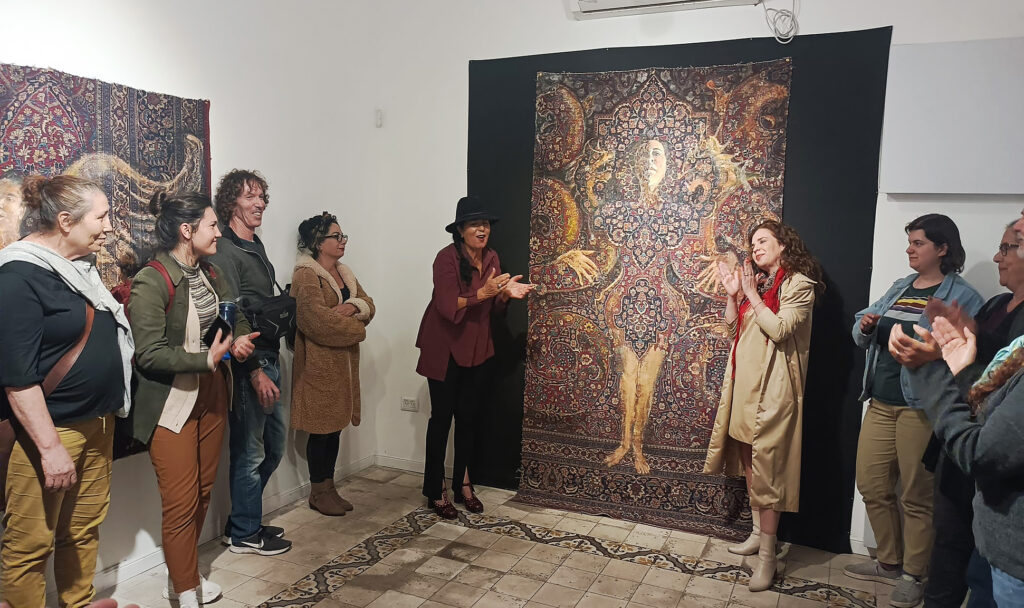
מתוך פתיחת התערוכה ׳מאלפת המפלצות׳. צילום: ינקל׳ה שמעוני
